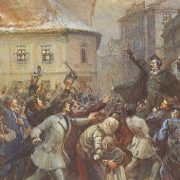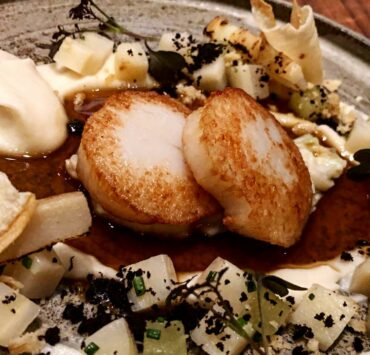Visitors to Budapest are always surprised at the number and types of museums in the nation’s capital. The country’s long and turbulent one-thousand-year history has resulted in a wealth of museum-worthy items, materials and exhibits. In the 20th Century alone, Budapest survived two world wars and more than 40 years of Communist occupation. Also included in the exhibits of the city’s museums are historical paintings and contemporary international art.
In 2013 the Hungarian government approved an ambitious museum-relocation plan. The €500 million development is going to fundamentally change Budapest’s cultural landscape by creating a museum quarter inside the City Park. In general, this is a welcome development. Some of the present institutions don’t have the space or viewing platforms their fantastic collections deserve; however, there has also been fierce public debate about the loss of precious green space.
At any rate, as of the date of this publication, here are the Top 13 Museums in Budapest at which locals, expats and travelers can find samples of Hungarian and international art and national treasures.
Hungarian House of Parliament
This turn-of-the-century Gothic Revival complex, located on the Danube’s east bank in Pest, is the biggest building in Hungary. It was built when Hungary was the capital of the Austro-Hungarian Empire and three times the size of its current territory. Exhibits include Hungary’s Holy Crown and the incredible ornate interior of the former Upper Chamber. To avoid the lines and to ensure entry, it is advisable to purchase your ticket online
A bejegyzés megtekintése az Instagramon
There’s art on the streets of the Hungarian capital. Check it out!
House of Terror
One of the most popular museums in Budapest, the House of Terror is dedicated to remembering the brutalities committed by the Hungarian Fascist party and by the subsequent Soviet-led communist regimes. In a strange twist of fate, both the Hungarian Arrow Cross Party and later the Communist Secret Police occupied this very same building and used it for detention, interrogation, and torture. Old newsreels, interviews with survivors, and curated objects inform the visitor of the everyday cruelty and dysfunctionality of the communist system.
A bejegyzés megtekintése az Instagramon
Dohány Street Synagogue and Hungarian Jewish Museum
Europe’s biggest synagogue has been the main temple of Budapest’s assimilated Jewish community since 1859. The building encloses the Garden of Remembrance, a mass grave for Jews murdered in 1944/45, and the subtle weeping willow Holocaust memorial with victims’ names inscribed on the metallic leaves. Admission includes a guided tour of the synagogue and entry to the Jewish Museum.
A bejegyzés megtekintése az Instagramon
Ludwig Museum of Contemporary Art
The scenic way to reach Budapest’s main outlet for modern artworks is via the Danube promenade, stretching from the Great Market Hall to the museum. Three floors and over 35,000-square-feet of exhibition space are dedicated to contemporary art in an impressive limestone-clad building. The most well-known is the Pop Art collection, but lesser-known Eastern European artists also get equal floor space.
A bejegyzés megtekintése az Instagramon
Hungarian National Gallery
Located inside the Royal Palace on Castle Hill, the Hungarian National Gallery has an exhaustive collection of local artworks, from the beginning of Hungary’s history (in 1000 A.D.) to the present day. From meticulously carved Gothic winged altars to avant-garde paintings, the museum features works of the country’s best known artists. As you take in the artworks, the Danube River bank and the Pest skyline provide a splendid backdrop.
Find out more about the current Frida Kahlo exhibit here.
A bejegyzés megtekintése az Instagramon
Holocaust Memorial Center
An informative and deeply moving exhibit on the Holocaust in Hungary. In addition to the museum, the venue includes a restored synagogue from 1924 (the second largest in Budapest), a memorial garden with a wall of victims, and a Tower of Lost Communities that lists all Hungarian towns where Jews have ceased to exist as a result of the deportations. The exhibit offers a 21st century museum experience through newsreels, photos, and interactive displays.
A bejegyzés megtekintése az Instagramon
Zwack Unicum Museum
Unicum is a famous Hungarian herbal liquor made from a secret formula containing more than forty types of herbs. It was initially prepared for the Habsburg Emperor in the 18th century to aid his digestive problems. A guided tour winds through the plant, where visitors learn about the production process and get to taste different types of Unicum. If you like the complex taste of this royal concoction, you can fuel up on bottles at the gift shop.
A bejegyzés megtekintése az Instagramon
Budapest History Museum
This was the first museum to move into the former Royal Palace in 1967, decades after the building was destroyed in WWII. The museum is split into two main sections. Its lower floors show the history of the Royal Palace, featuring the excavated Gothic- and Renaissance-style medieval halls from the 15th century. The top floor presents Budapest’s history from the Bronze Age to today.
A bejegyzés megtekintése az Instagramon
Interested in English language theatre in Budapest? Click here!
Victor Vasarely Museum
Hungarian-born and educated Victor Vasarely was the founder of the Op Art movement, a popular form of abstract art that relies on optical illusions and spatial tricks. The roots of Vasarely’s art can be traced back to the Bauhaus-type Budapest art school he attended before moving to Paris in 1930. Vasarely and the op art movement achieved worldwide fame in the 1970s.
A bejegyzés megtekintése az Instagramon
Robert Capa Contemporary Photography Center
The name of this museum is somewhat misleading because only one of the rooms, with about 50 photos, shows the works of Robert Capa, the iconic Hungarian photographer. Nonetheless, it’s a well-curated museum focused on contemporary photography, featuring works of leading international and Hungarian artists. Also, check out the gracious-but-rundown art nouveau building housing these exhibits.
A bejegyzés megtekintése az Instagramon
Hungarian House of Photography (Mai Manó House)
For more photography, visit the Mai Manó House down the street from the Robert Capa Center. This eclectic building just off Andrássy Avenue used to be the studio of Manó Mai, a royal court photographer during the Austro-Hungarian Empire. The temporary exhibits present local and international photos ranging across styles and periods.
A bejegyzés megtekintése az Instagramon
Goldberger Textile Collection
An interactive, highly informative, and ultimately heartbreaking exhibit about the Goldberger family’s thriving textile manufacturing business. The exhibit traces the stages of development from a one-man shop to a vertically integrated conglomerate to which even the Habsburg Emperor, Franz Joseph, paid a visit. Besides family history, visitors can learn about blue-dyeing, roller printing, and screen printing techniques, and can even try their hand at making pattern designs.
A bejegyzés megtekintése az Instagramon
(Stained Glass Maker) Miksa Róth Memorial House
Name a famous Budapest building and chances are that its stained glass windows were made at Miksa Róth’s renowned atelier (e.g. Hungarian Parliament Building). The museum features 60 or so splendid works of stained glass and over a dozen glass mosaics. A lifelong explorer of new techniques, the exhibits follow Roth’s development from eclecticism to art nouveau and art deco.
A bejegyzés megtekintése az Instagramon




